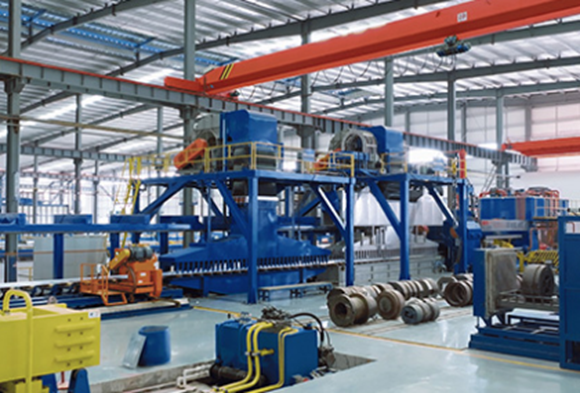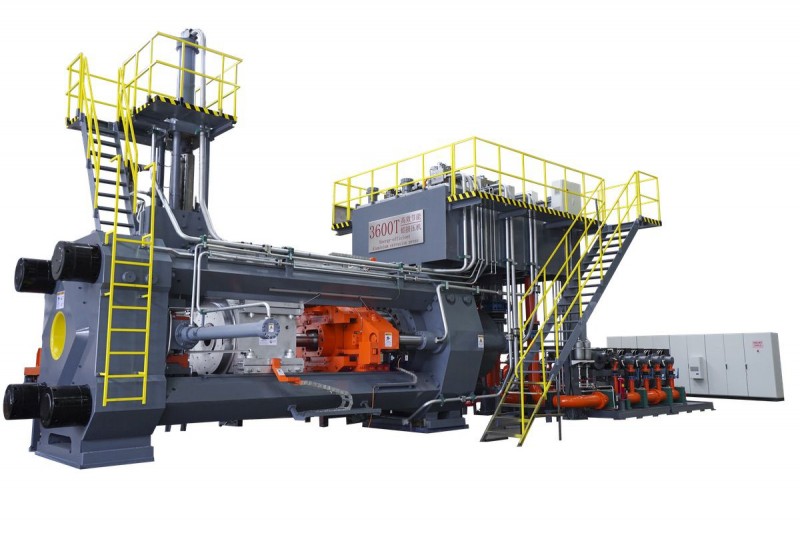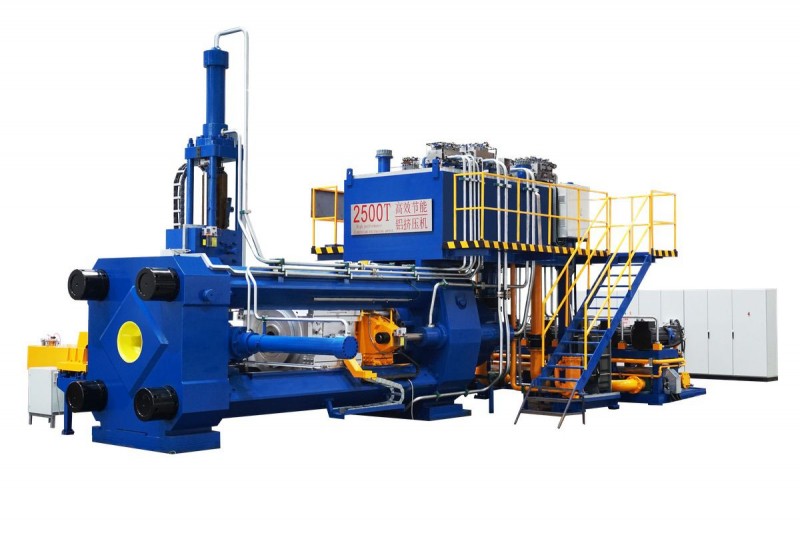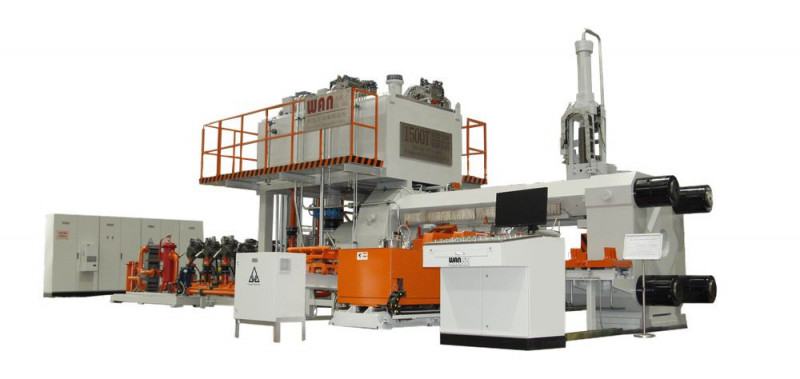With the increasing demand for high quality profiles, the aluminum industry is growing rapidly creating opportunities in the sheet metal fabrication sector. Aluminum is a naturally occurring element with excellent physical and chemical properties that makes it useful in various applications.
The fact that it’s relatively inexpensive to mine but creates highly sought after products create an extremely lucrative sphere for those who want to set up a business, take advantage of the high profit margins and generate jobs while at it. Herein, we cover everything you need to know about aluminum extrusion, plus what it takes to set up such a business, the involved expenses and tips to reduce costs.

Aluminum extrusion is a multi-versatile fabrication technique used to give aluminum desired profiles with timely execution and superior results compared to any other known aluminum forming technique.
Your initial exposure to the concept of extrusion was probably the first time you squeezed toothpaste through a tube opening and a long round paste came out. Aluminum extrusion works just the same way. Basically, an extruder like this one forces a malleable aluminum billet through a mold ring with a narrower cross-sectional profile than the billet. That way, the billet assumes the shape of the mold ring as it emerges on the other side.
Frankly, there’s no limit to the different die designs that can be created for use in the extrusion process. In fact, with the proliferation of 3D printing technology complex mold designs can be created to produce aluminum extrusions with one-of-a-kind profiles.
You can create solid profiles, hollow shapes with at least one opening, or semi-hollow shapes with partially closed openings such as narrow gap c-channels. Additionally, you may choose to give the profiles various interlocking features and different color patterns.
The major parts of an aluminum extrusion setup include the extrusion press, die heating oven, billet heating furnace, a cooling bed, puller, cutting and resizing setup, aging oven and surface treatment station. Operating this setup requires electricity or natural gas, heat and human labor.
First, the mold is prepared and preheated to about 500 degrees Celsius. This may take you about 5 hours. Next, the aluminum log is selected and heated to between 375-500 degrees Celsius to make it just soft enough for extrusion. Heating makes the aluminum malleable, reducing the amount of force and, therefore, energy needed to force it through the mold ring. However, care is needed to avoid turning the billet into a free-flowing soup. It’s heated to make it just malleable enough for extrusion but not molten.
Once the log exits the furnace, it’s loaded onto the extrusion press, sheared to size and pressed via direct or indirect extrusion, depending on the setup. Controlling temperature and pressure throughout the extrusion process is key to ensuring smooth and efficient extrusion.
Direct extrusion is where the billet is forced forward into a mold opening using a powerful ram. On the other hand, in indirect extrusion, it’s the die assembly that’s pushed to press against the malleable bill allowing it to extrude through. The latter is a simple process that enables the creation of longer pieces, but it generates a lot of friction creating temperature control issues. On the other hand, indirect extrusion is somewhat complex but doesn’t require much force or result in temperature control issues.
The billet exits the extruder with a profile similar to the mold’s opening cross-section. It’s then grabbed and guided along the lead-out and runout tables for cooling, and further processing and surface treatment.
Establishing an aluminum fabrication shop will allow you to cater to different users of aluminum extrusions in the commercial, industrial and domestic sectors. The first thing you need to know about this metal is that it’s abundantly scattered throughout the planet. About 9% of the earth’s crust is made up of aluminum. Fact number two is that it’s incredibly recyclable. Yes, about 100 billion tons of aluminum have been produced in the last century, and 3/4s of that is still in use!
Aluminum pieces coming from other projects can be refurbished and put in other applications with ease. It’s corrosion-resistant, has good thermal and electrical conductivity, excellent strength to weight ratio and is extremely malleable to boot! As the demand for aluminum products continues to soar, setting up an aluminum extrusion shop is the surest way to take advantage of the opportunity. Aluminum production is relatively inexpensive, but the products themselves are pricey and that means high profit margins.
Aluminum profiles are used in architecture and construction, furniture, transportation, automotive, electronics and consumer products. But before you jump at the opportunity to cater to the demand, you will need to understand the components and expenses involved in setting up an aluminum fabrication shop, plus tips for keeping costs low.
Setting up and operating an aluminum extrusion factory involves purchasing equipment, acquiring land, premises and permits and setting up insurance and budget for utility, and labor. Here’s a detailed breakdown:
The main equipment in aluminum extrusion facilities is the extrusion machine. This can be a hydraulic, electric or pneumatic press, allowing you to force aluminum through mold rings with desirable cross-sectional profiles. Moreover, extruders can be divided into single action or double action vertical or horizontal presses.
Choose a model based on the type of profile you want to create, the extrusion capacity (small, medium, large, heavy) and the extruder grade. The latter simply refers to the quality of the press. For example, if you only want to create medium-sized profiles, a domestic extruder will work just fine. But for high-end products, you'd better import a state-of-the-art machine. Needless to say, high-end extruders cost more to acquire and maintain.
If the extruder doesn’t come with a ready-made die assembly, you will have to make one from high quality H13 steel. You can do it old school or adopt current techniques, which involve the use of 3D printing machines to design and create molds faster and at a reduced cost. 3D printing enables the creation of more complex mold designs.
You will need an oven to preheat the die, a furnace to heat the aluminum billet and infrared temperature monitoring cameras to measure the success of your temperature control efforts at the press loading, during the extrusion and at the lead-out table. Maintaining the correct temperature at these 3 stages will result in profiles with desirable structural integrity and mechanical properties.
You will also need to preheat the extrusion barrel and other secondary components to the correct temperature and maintain the temperature throughout the extrusion process.
Once the extruded profiles emerge from the other side, you will need a conveyor belt system comprising a puller to grab the aluminum and guide to the lead-out table for quenching in a water bath or using fans. Following quenching, you can slice the profile at the joint and move it to the runout table for additional cooling and straightening to remove unwanted twists. The extruded piece can then be cut to size, according to the customer’s specifications.
Following the extrusion, quenching, stretching, cooling and cutting, the extruded pieces can be put in an aging oven to be tempered to desired degrees. This can be followed by secondary services such as deburring, for which you will need a roto machine to help remove sharp edges and prepare the pieces for either painting, powder coating or e-coating. Setting up equipment for these secondary services means spending more, but you will benefit from increased customer satisfaction, great reviews and increased demand for your profiles.
The equipment will have to be housed in a secure facility. The size of land and buildings will depend on the type of equipment, the size of your operation, and the layout. Generally, aluminum extraction factories are space monsters. Yeah, a 1000-ton aluminum fabrication facility requires around 4.94 acres of land for safe and efficient operations.
You will also need to keep in mind the location and current real estate market when selecting a place for your extrusion premises. If you want to set up a business in a big metropolitan area and operate close to your clients, you will have to fork up more cash for land than buying in rural locations.
For premises, you can go with prefabricated buildings and pay a lower cost or build your own and get in all the customization you want. Basically, prefabricated structures allow you to commence operations right away, while building your own takes time. However, the latter allows you to decide on the materials to use, customize it to your operations and use local labor, leading to good rapport with the local community.
You will need to consider the cost of operating the aluminum fabrication factory, too. Common utilities include water and electricity or natural gas. As mentioned, you’ll be doing a lot of heating, cooling and tempering in an oven or furnace.
You can use natural gas, electricity or both to power your extrusion press, mold heating oven, billet heating furnace, conveyor belt and other equipment. You can even set up solar power collection and storage equipment to supplement some of your power needs and reduce the monthly electricity bill.
Moreover, you will have to put money on your budget for employees’ salaries and wages. This will depend on the size of your operation and level of automation.
Generally, you will need operators at the extrusion press, billet heating furnace, mod heating oven, cooling bed, aging ovens, and surface treatment sections. You will also need the services of quality control inspectors, maintenance technicians and general staff workers. Different skills demand different wages and compensations. Generally, labor costs make up a significant portion of an aluminum extrusion factory’s budget.
That being said, one prominent trend in aluminum extrusion technology is the uptake of automation and robotics for billet loading and unloading, pushing, pressure and temperature monitoring and control and quality inspection. This is in an effort to reduce operations costs and boost efficiency.
Other cost-reduction measures include using energy-efficient equipment and adopting energy-saving practices such as maintaining proper insulation, leaving lights off when not in use and conserving water.
For operating an aluminum extrusion shop, you will need licenses from the local environmental protection agency. The agency will need to certify that your operation has systems and safeguards in place to prevent the release of wastes and emissions into the environment. You will also need to show that you have protocols in place to correct environmental problems should they occur.
You will also need to satisfy international labor standards for OSHA. If you don’t know what OSHA means, this is an international organization that deals with Occupational Safety and Health Administration to ensure industrial workplaces are safe for users.
Additionally, you will need a business license from your local government. This will allow you to sell merchandise, register for a tax ID, and more. You can consult with experts from local government agencies to learn more about business licenses.
Apart from permits, you’ll also need to set up workers compensation insurance to take care of employees who suffer harm in the cause of executing business operations. You will also need
small business property and liability insurance to cover against general claims of property damage or bodily injury resulting from your business operations. It’s also wise to ensure your buildings, rented facilities and equipment. Finally, consider taking business income insurance for when you can’t carry out operations. It will compensate for lost business income.
That’s it; setting up an aluminum extrusion shop, simply, is no funny business. Without proper research, you may not be able to get the project from the ground. There’s no underestimating the importance of working with experts to research the market, develop a business plan, choose a location and set up shop.
Experts can help you make decisions on critical matters and also provide tips to boost efficiency and reduce costs. Most importantly, work with a reputable extrusion solutions provider.
Aluminum extrusion is an ever-evolving process, facilities need adaptable solutions that can help meet the changing needs and standards while keeping operational costs low. That’s why we are committed to the research and development of state-of-the-art extrusion machines and solutions to enable the creation of first-class aluminum profiles with expedited turnaround.
Our machines provide great automation efficiency while consuming low amounts of energy and presenting customized features to enable our customers to meet their clients demands. To learn more about our equipment, contact us, and we will be happy to talk to you.


